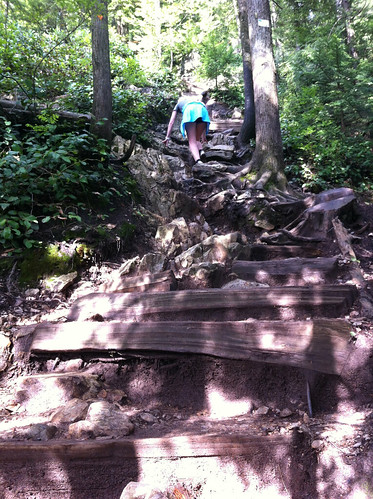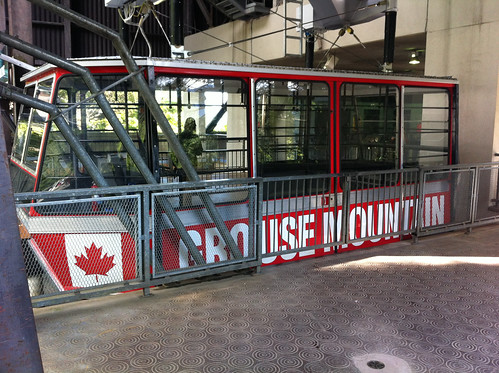Flying back to Beijing on Air China
After 4 months of living in Vancouver we planned to spend part of our summer holiday in China. To be honest, I was not looking forward to go back. The weather in July is fantastic in British Columbia and there are still so many things that I wanted to see or do close to our new home. But my wife and kids really wanted to see their family and I also wanted to catch up with some friends and set up some business meetings, so I decided to join them.
Beijing Olympic Forest Park and its 10 km running track on a hot summer day without pollution
We arrived in Beijing a week ago and the weather was almost as good as in Vancouver: temperatures in the lower 30s Celsius and a clear blue sky. When we had drinks with friends in a Houhai courtyard one night we could even see the stars – quite unusual in the middle of Beijing. Of course the weather did not stay long like this and when I opened the curtains in our apartment on the 3rd day Scott immediately asked me why it was so polluted outside.
Houhai area in Beijing
But interestingly I did not mind the pollution that much anymore. While we were living in Shanghai I hated it, especially because I could not run outside and the kids often could not play in the outdoor playground at school. I guess the big difference is that I knew this will be only for a few days (or weeks) before we would be back in a country that does not need to measure its air pollution. I even went for a long run in the smog when it was a bit less severe (just over the 150 level, which is merely ‘unhealthy’), something I never did in Shanghai.
Generally I liked Beijing a lot better during the past week than I had imagined. The traffic jams were as bad as always, or maybe even worse. But we had arranged a car with driver and had enough time, so it did not matter too much and I managed to read 2 books in the back seat while crawling through the city. Traffic is a lot worse than in Shanghai, I could never drive here myself anymore. In Vancouver I love driving, most days I open the top of my convertible while driving to and from the office, even when it’s cold. But driving a cabriolet in Beijing would be a waste of money, or at least extremely unhealthy.
There are so many cars in Beijing that people park in the middle of the street
One night we did not have our car and had to take a taxi from dinner at the North 4th Ring Road to drinks with friends at Centro. It was raining and impossible to find a cab, the few that were available refused to take rides. Very different from when I lived her in the early 2000s, I suppose the taxi fares are still way too low so there is no incentive to take passengers on a rainy night. Luckily a friend passed by and drove us to the bar. For me it would be hard to imagine living in Beijing without a car and driver, maybe I should give public transportation a try?
4D movie at the China Science & Technology Museum
Grace mainly spent time with her family and with the kids, taking them to (indoor) playgrounds, swimming pools, the Olympic Park (when the weather was still nice) and to lunches with her friends. I mainly spent time at home during the day, studying for my Canadian boating license (I passed the exam last night!), doing a Spanish course to brush up on my skills (I did not speak or study Spanish in almost 20 years), and to read a book on Canadian corporate tax law (which sounds more boring than it really is).
Beijing still has a lot of great Japanese restaurants
At night we met up with lots of friends, who either live in Beijing or were here on business trips. Among others we had dinner with a group of former Mercedes-Benz colleagues, some of whom I had not seen since 2002. We went to Gary’s new house one night and I visited Gary’s new company (which among others has its own cinema, so next time I’ll bring the kids so they can watch cartoons there!). We also had some business meetings and of course had a couple of 4-hands massages at Dragonfly (they should open a branch in Vancouver, I think they will do very well there).
To my surprise I enjoyed the first week a lot more than I had imagined, a change of scenery every few months is good. I realize that I still like Beijing very much, despite all its downsides. I could not live here anymore, but it’s a place I need to come back to at least once a year. The place still has the vibe that Shanghai also has, but that Vancouver is missing.




















